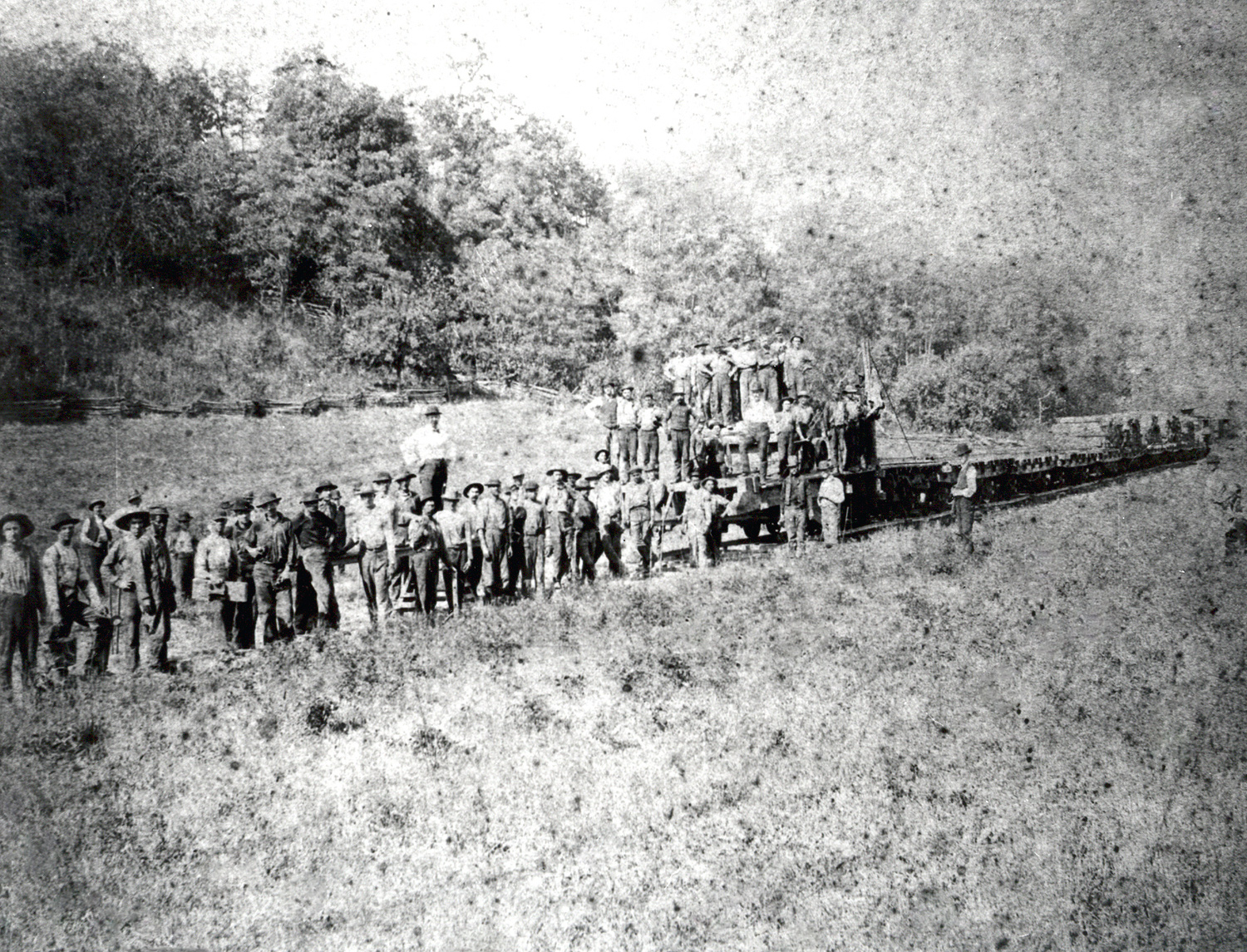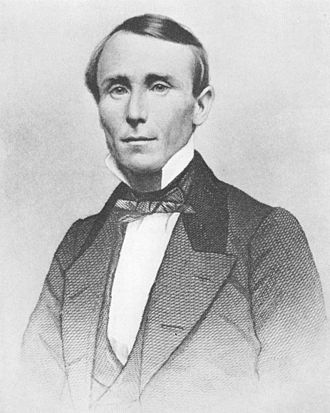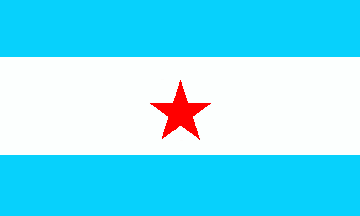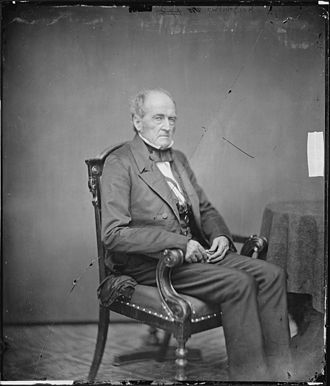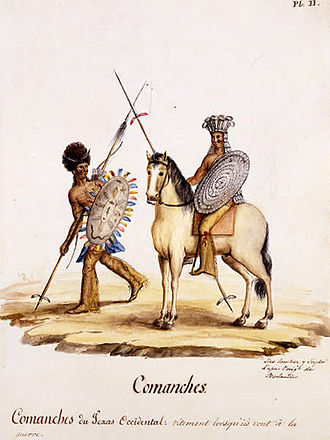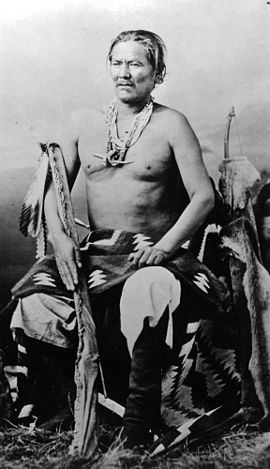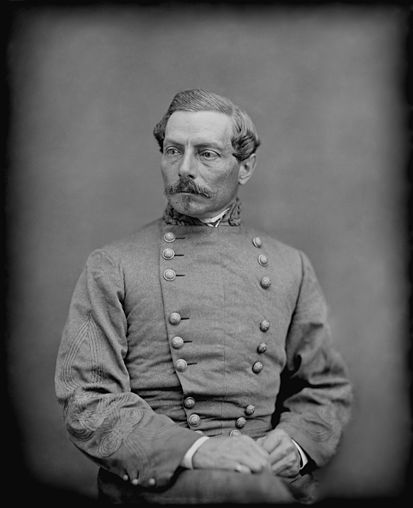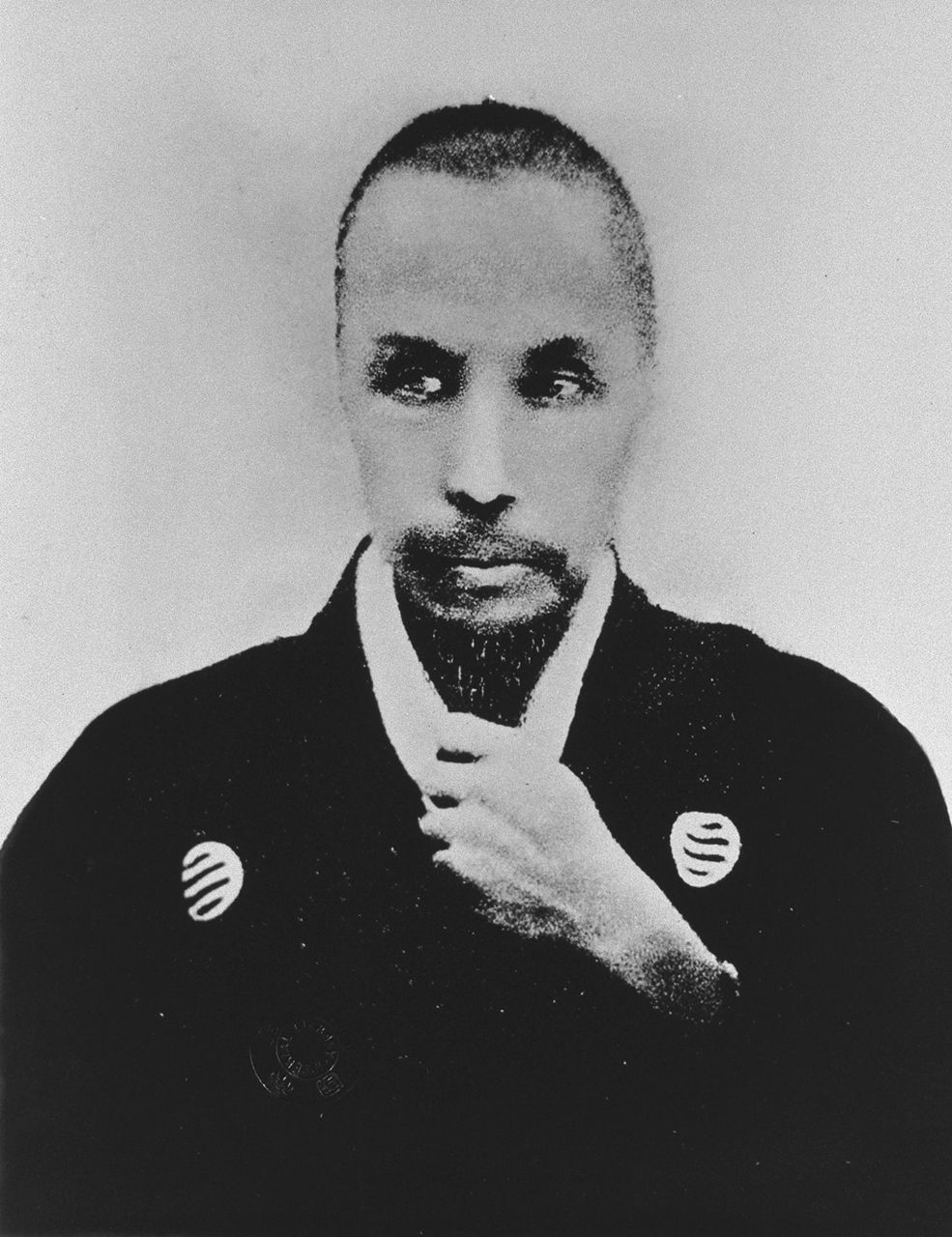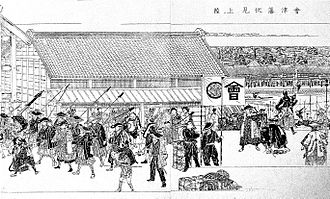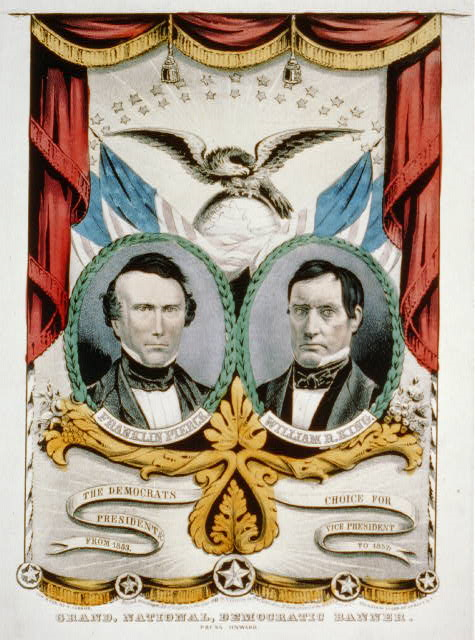
The founding fathers united the states in 1787, but in the decades that followed, their work was coming undone. Despite their great wisdom, the Constitution they wrote had failed to resolve one issue that would soon surpass all others in importance. The issue of slavery was set aside, to be revisited at a future date. In all fairness, at the time it appeared that slavery was going to eventually die out. In the 19th century it became apparent that slaveholders were not going to surrender their precious institution easily. As slavery largely disappeared from the North, it became even more entrenched in the South. This created a geographic polarization. This polarization was exacerbated by recent expansion at the expense of Mexico. Making matters worse was the increasing talk of secession, mostly in the South, though most saw this as bluffing. This made it all the more important that the Democrats choose a man who could appeal to both regions of an increasingly divided nation. In 1852 that man was Franklin Pierce.

Franklin Pierce (D-NH)/William King (D-AL): 1,605,943 Votes (50.83%), 254 Electoral Votes
Winfield Scott (W-NJ)/William Graham (W-NC): 1,386,418 Votes (43.88%), 42 Electoral Votes
John Hale (FS-NH)/George Julian (FS:-IN): 155,799 Votes (4.93%), 0 Electoral Votes
Others [1]: 11,480 Votes (0.36%), 0 Electoral Votes
Franklin Pierce was a Mexican War veteran and exceedingly popular in both the North and the South. He was thus the perfect candidate for the nomination. He would go on to win the election in a landslide, defeating Whig candidate Winfield Scott by nearly seven percent. He won 254 electoral votes to Scott’s 42. Pierce’s support came from both North and South, and so did Scott’s. Of the four states that voted against Pierce, two were Northern and two were Southern. It looked as if the sectional divisions threatening to tear the country apart might subside. That would be wishful thinking, of course. But plenty of people in both sections were optimistic. The Pierce presidency, interestingly enough, almost didn’t happen. On January 8, 1853, in Amherst, Massachusetts, there was a train accident. Aboard the train was Pierce, his wife, and his son. Fortunately, no one was killed [2]. In his inaugural address, which he gave from memory, he spoke in favor of peace but also in favor of expansion. He never mentioned the issue of slavery.

(Franlin's wife, Jane, and his son, Benjamin)
Pierce’s cabinet would include Democrats from all around the nation. His Vice President was the 66-year-old Alabama Senator William R. King. King held a firm pro-slavery stance. His Secretary of State was William Marcy of New York, who had served as Secretary of War under James K. Polk. Marcy was a committed expansionist. Pierce appointed James Guthrie of Kentucky, an opponent of central banking, as Secretary of the Treasury. Senator Jefferson Davis of Mississippi, advocate of slavery and expansionism, was chosen as Secretary of War. Justice Caleb Cushing of Massachusetts, a Northerner with southern sympathies, was chosen as Attorney General. Pennsylvania Attorney General James Campbell became the new Postmaster General, the first Catholic member of a presidential candidate. The new Secretary of the Navy would be former Representative James C. Dobbin of North Carolina, an advocate of a strong navy. Michigan Governor Robert McClelland, a moderate on slavery, was selected as Secretary of the Interior. Pierce would soon appoint John A. Campbell of Alabama, a staunchly pro-slavery justice, to the Supreme Court. On April 18, King died, and his position would remain vacant for the next four years.

(William Rufus DeVane King, 1786-1853)
Pierce himself was an expansionist, and in late 1853 America purchased land from Mexico in what is known as the Gadsden purchase (named after South Carolina businessman and Ambassador James Gadsden). Commodore Matthew Perry went to Japan, and the Convention of Kanagawa was signed in 1854. America could now trade with Japan at the ports of Shimoda and Hakodate [3]. Back home, the early months of 1854 saw an attempt by Democratic Senators to repeal the Missouri Compromise. These Senators, led by Stephen Douglas, wanted to allow voters in the new territories determine whether their territory would be admitted as a slave state or a free state. This would open up the new territories of Kansas and Nebraska to the possibility of slavery. While support for such a bill was highest in the south, plenty of Northern senators supported it as well (Douglas himself was from Illinois). When they approached the president, they were unable to convince him to support their bill. Pierce argued with Southern senators, claiming that Kansas was “too cold” for slavery to work there, and that any attempt to bring slavery into Kansas would turn public opinion against the South. After hours of negotiations, Pierce was unmoved. He unequivocally stated that he would veto any attempt to allow slavery in Kansas.

(Japanese Depiction of Commodore Matthew C. Perry)
Pierce assured Southern political leaders that he would protect their interests in other ways. He suggested that he would support efforts to expand Southwards, particularly Cuba. He also pledged to support a southern route for the transcontinental railroad, using the land recently purchased from Mexico. And he told them he could sway enough Northern Democrats to vote for the admittance of New Mexico as a slave state in the near future. Nevertheless, many southerners were angry at the president. A rift between Pierce and Douglas occurred as well. Kansas, though not yet populous enough to attain statehood, was destined to become a free state. Despite this, the majority of settlers were from neighboring Missouri. The Kansas Territory, under Pierce’s appointed governor Andrew Reeder, would ban slavery while at the same time enforcing fugitive slave laws. There was a small but vocal abolitionist movement in the territory. Nebraska, on the other hand, would be mostly settled by people who were staunchly anti-slavery. Later that year, the Nebraska territory would see conflict between the US Army and the Brulé band of the Lakota.

(Stephen Douglas, advocate of popular sovereignty)
When Pierce began to push for a southern railroad, he predictably faced opposition from northerners. Ironically, much of the opposition came from Whigs, who were generally supportive of internal improvements. In addition, there were plenty of southerners who were disinterested in the railroad. Pierce changed tactics. He argued that the railroad was necessary for national security purposes. He claimed that a railroad from New Orleans to San Francisco would allow for the quick movement of troops, which could be useful in protecting settlers in the Southwest from attacks by hostile Indian tribes. In order to get some northern Whigs on board, the railroad bill was amended to include increased funding for infrastructure in the North, and stipulated that free labor would be used to build the railroad. Though the labor would “free,” it would hardly be fair to the Chinese and Irish immigrants who would do most of the work. James Gadsden helped convince some southerners who were still on the fence. The bill was narrowly wrangled through congress and signed by President Franklin Pierce on August 1, 1854.

(James Gadsden was the brains behind the Southern railroad)
The issue of slavery would continue to threaten disunion. Pierce’s administration was committed to enforcement of the fugitive slave act. Federal agents snatched escaped slaves from Massachusetts, horrifying many Northerners. This helped grow the Free-Soil Party and forced Northern Whigs to take a firmer stance against slavery. During the 1854 congressional elections, Northern Whigs used both anti-slavery and anti-immigrant sentiment against the Democratic Party. Democrats experienced losses in both the House and the Senate, mostly in the North. Nevertheless, both chambers maintained their Democratic majorities. Linn Boyd of Kentucky kept his position as House Speaker. The 34th Congress would have 124 Democratic Representatives, 105 Whigs, and 5 Free-Soil Representatives. The President pro tempore of the Senate would be Lewis Cass of Michigan. The Democratic majority fell from 35 to 33 Senators. There were 27 Whig and 2 Free Soil Senators. There was a great deal of infighting in both parties during the congressional elections, which was seen as a sign of things to come.

(House Speaker Linn Boyd)
2: This is the POD, in OTL Benjamin Pierce was killed in that accident.
3: Up to this point all the domestic and foreign policies of the Pierce administration are the same as OTL.
